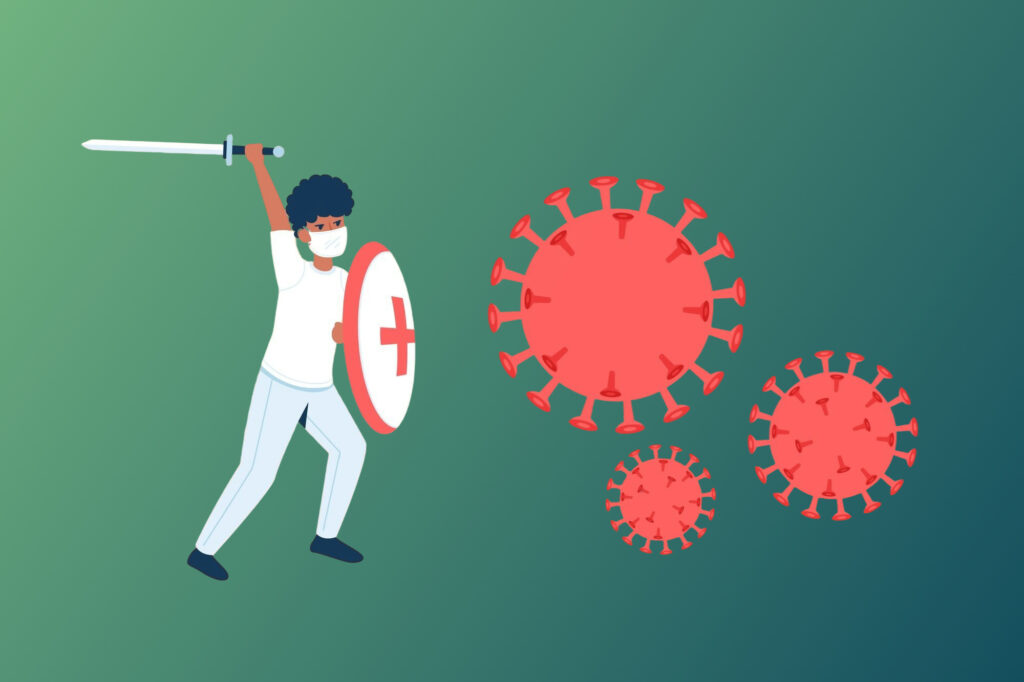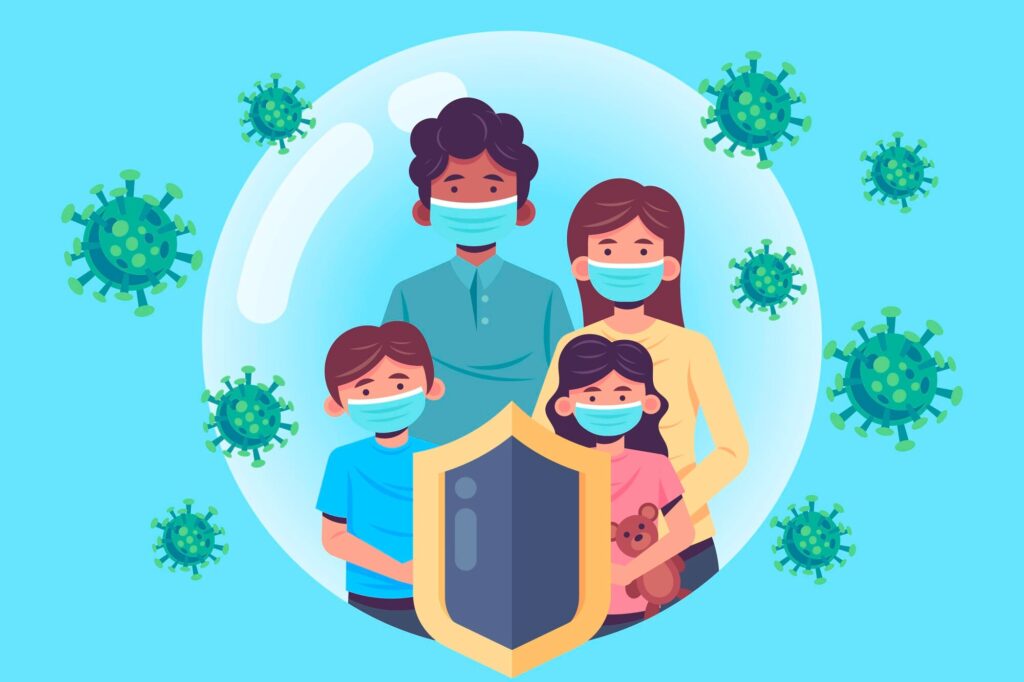Emerging Diseases in the Year 2025: Impact, Countermeasures, and Precautions
As the year 2025 unfolds, the global community faces a heightened risk of emerging infectious
diseases that threaten public health, economies, and societal stability. These diseases, fueled
by factors such as climate change, globalization, and human-animal interactions, have the
potential to disrupt lives and challenge health systems worldwide. This article delves into the
key diseases posing a global threat, their impacts, and the countermeasures and precautions
necessary to combat them effectively.
Emerging Diseases in 2025
- Avian Influenza (H5N1 and H7N9)
○ Description: Avian influenza strains continue to evolve, with some adapting to
infect humans. The highly pathogenic H5N1 and H7N9 strains have shown
zoonotic potential, raising concerns about widespread outbreaks.
○ Impact: These viruses can cause severe respiratory illness in humans, with high
mortality rates. The poultry industry faces significant economic losses, and the
risk of human-to-human transmission could trigger a global pandemic.
○ Precautions: Surveillance of bird populations, vaccination of poultry, and public
awareness campaigns are critical. Personal hygiene practices and avoiding
contact with live poultry in outbreak areas are essential. - Nipah Virus
○ Description: The Nipah virus, a zoonotic pathogen transmitted from bats to
humans, poses a significant threat due to its high mortality rate and potential for
human-to-human transmission.
○ Impact: Nipah outbreaks cause neurological and respiratory symptoms, leading
to fatal outcomes in many cases. Healthcare systems in affected regions struggle
with containment and treatment due to limited resources.
○ Precautions: Monitoring bat populations, reducing human-bat interactions, and
implementing stringent infection control measures in healthcare settings are
crucial. - Dengue Fever
○ Description: Dengue fever, transmitted by Aedes mosquitoes, continues to
spread to new regions due to urbanization and climate change.
○ Impact: The disease causes flu-like symptoms, severe dehydration, and in
extreme cases, dengue hemorrhagic fever. Regions with inadequate healthcare
infrastructure face high morbidity and mortality rates.
○ Precautions: Eliminating mosquito breeding sites, using insect repellents, and
widespread public health campaigns can help control its spread. - Marburg Virus Disease
○ Description: A rare but deadly hemorrhagic fever similar to Ebola, the Marburg
virus is transmitted through direct contact with bodily fluids of infected individuals.
○ Impact: Outbreaks result in high fatality rates and pose challenges in
containment due to limited treatment options and the need for strict isolation
protocols.
○ Precautions: Early detection, rapid isolation of cases, and equipping healthcare
workers with protective gear are essential to controlling outbreaks. - Human Metapneumovirus (HMPV)
○ Description: HMPV, a respiratory virus that spreads via droplets, primarily
affects children, the elderly, and immunocompromised individuals. Though often
underdiagnosed, it has gained attention for its global prevalence and impact.
○ Impact: HMPV causes flu-like symptoms, including fever, cough, and wheezing,
and in severe cases, pneumonia. Outbreaks can overwhelm healthcare systems,
especially during flu seasons when other respiratory viruses are also prevalent.
○ Precautions: Enhanced diagnostics, public awareness, and personal hygiene
practices such as handwashing and mask-wearing are effective in mitigating its
spread. Vaccines and treatments are under development, emphasizing the need
for continued research. - Antimicrobial-Resistant Infections
○ Description: The rise of multidrug-resistant bacteria, such as carbapenem-
resistant Enterobacteriaceae and methicillin-resistant Staphylococcus aureus,
has escalated into a global health crisis.
○ Impact: These infections are difficult to treat, leading to prolonged hospital stays,
higher medical costs, and increased mortality. Routine surgeries and medical
procedures become riskier.
○ Precautions: Responsible use of antibiotics, investment in new antimicrobial
agents, and strict infection control practices in healthcare settings are critical. - Zoonotic Coronaviruses
○ Description: The ongoing risk of zoonotic coronaviruses emerging from wildlife
markets or farms remains a concern. Novel strains with pandemic potential could
arise from these interactions.
○ Impact: The economic and societal disruptions caused by previous coronavirus
outbreaks, such as SARS and COVID-19, highlight the devastating potential of
new variants.
○ Precautions: Monitoring high-risk regions, regulating wildlife trade, and
strengthening global health surveillance systems are necessary to reduce the
risk.
8.Chikungunya Virus
○ Description: Another mosquito-borne virus, Chikungunya, has been spreading
to previously unaffected regions, causing joint pain and fever.
○ Impact: While rarely fatal, Chikungunya leads to prolonged health issues,
particularly in older adults, and strains healthcare systems in endemic regions.
○ Precautions: Public awareness, vector control programs, and research into
vaccines and treatments can mitigate its impact.
Impact of Emerging Diseases
Emerging diseases in 2025 have widespread and multifaceted impacts:
- Strain on Healthcare Systems
Outbreaks often overwhelm healthcare facilities, leading to shortages of medical
supplies, personnel, and hospital beds. This compromises the ability to provide timely
care, even for non-infectious conditions. - Economic Consequences
Quarantines, travel restrictions, and disruptions to trade and supply chains result in
significant financial losses for governments and industries. Tourism, agriculture, and
manufacturing sectors are particularly vulnerable. - Social Challenges
Fear and misinformation during outbreaks can lead to stigmatization of affected
individuals or communities. Public resistance to health measures like vaccination further
complicates containment efforts. - Global Disparities
Low-income countries with limited healthcare infrastructure bear the brunt of emerging
diseases. Unequal access to vaccines, treatments, and resources exacerbates existing
inequalities. - Impact on Mental Health
Prolonged outbreaks contribute to anxiety, depression, and other mental health issues
among affected populations. Healthcare workers face burnout due to increased
workloads and emotional stress.
Countermeasures to Address Emerging Diseases

To combat the threats posed by emerging diseases, a comprehensive approach is necessary:
- Enhanced Disease Surveillance
Governments and health organizations must invest in real-time monitoring systems to
detect and track outbreaks. This includes integrating technology, such as artificial
intelligence, to analyze data and predict trends. - Global Collaboration
Coordinated efforts among countries are vital to sharing resources, expertise, and data.
International bodies play a crucial role in facilitating cross-border cooperation and
funding outbreak response efforts. - Investment in Research and Development
Developing vaccines, antiviral drugs, and rapid diagnostic tools is essential to staying
ahead of evolving pathogens. Public-private partnerships can accelerate the production
and distribution of medical innovations. - Strengthening Healthcare Infrastructure
Building resilient healthcare systems includes increasing the capacity of hospitals,
training medical personnel, and ensuring equitable access to care. Remote and
underserved areas should receive special attention. - Public Health Education
Raising awareness about preventive measures, such as vaccination, hygiene practices,
and vector control, empowers individuals to protect themselves and their communities. - Combating Antimicrobial Resistance
Strict regulations on the use of antibiotics in humans and livestock, coupled with public
awareness campaigns, are critical in addressing this growing threat. - Promoting the One Health Approach
Recognizing the interconnectedness of human, animal, and environmental health is key
to preventing zoonotic diseases. Sustainable practices, wildlife conservation, and
responsible farming can reduce the risk of spillover events. - Emergency Preparedness Plans
Governments must develop and regularly update contingency plans to respond swiftly
to outbreaks. This includes stockpiling essential supplies and establishing protocols for
quarantine and vaccination campaigns.
Conclusion
Emerging diseases in 2025 underscore the importance of global vigilance, innovation, and
cooperation. As the world becomes increasingly interconnected, the risks posed by infectious
diseases grow more complex. However, with proactive measures, investment in healthcare
infrastructure, and a commitment to scientific research, humanity can effectively address these
challenges. By combining the efforts of governments, organizations, and individuals, the global
community can build a resilient future, safeguarding public health and ensuring societal stability
in the face of evolving threats.


